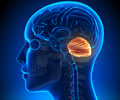A research finds that Human embryonic stem cells (hESCs) hold great promise for benefiting degenerative diseases
A research finds that Human embryonic stem cells (hESCs) hold great promise for benefiting degenerative diseases. The study is the first to provide evidence that stem cell-derived nerve cells may integrate electrically and functionally into a diseased brain.
This study was conducted by an international collaboration led by Evan Y. Snyder, M.D., Ph.D., and spearheaded by a member of his lab, Jean-Pyo Lee, Ph.D., of the Burnham Institute for Medical Research ('Burnham'). The study, to be published in Nature Medicine, will be made available by advanced publication at the journal's website on March 11, 2007.The investigators first chose to approach, as proof-of-concept, a mouse model of a representative lethal neurodegenerative disease. The mouse model chosen falls in a class of genetic diseases that afflicts 1 in 5000 patients, typically children.
The mouse used here has Sandhoff's Disease, a lethal genetic disease related to Tay-Sachs Disease. Both diseases are marked with deficient Hex enzyme functioning and are among a known group of about 50 diseases rooted in the inability to metabolize lipids or other materials.
Sandhoff results from a genetic mutation that reduces the body's supply of an enzyme, called hexosaminidase ('hex'), used by brain cells to metabolize excess fatty material called lipids. The accumulation of lipids in brain tissue destroys the brain cells instrumental in controlling and coordinating body movement and results in inexorable deterioration of the brain and spinal cord. (Onset is typically at six months in human infants. Children suffering with Sandhoff rarely see their sixth birthday.)
Next, the researchers used mouse neural stem cells (NSCs), a type of 'adult' stem cell, to establish the parameters of what might or might not be achievable in this disease. Then, having demonstrated success with mouse cells, they extended those insights to stem cells of human origin, both human neural stem cells and human embryonic stem cells, and, in fact, had the opportunity, for the first time, to compare those two types of controversial stem cells head-to-head in the same model.
When stem cells were implanted -- at simply one time point -- into brains of newborn Sandhoff mice, the onset of symptoms was delayed, well-being and motor function was preserved, and lifespan was extended by >70%.
Advertisement
'Our studies suggest that functional neuronal replacement can be complemented and, under some conditions, eclipsed by a range of other stem cell actions that nevertheless exert a number of critical stabilizing forces,' said Dr. Snyder, director of Stem Cells and Regeneration at Burnham. 'In fact, our study offers the first evidence that stem cells employ multiple mechanisms -- not just cell replacement - which collaborate to benefit disease. These findings also raise the possibility - somewhat counter-intuitively -- that stem cells may inherently exert an anti-inflammatory influence in degenerative diseases,' said Snyder.
Advertisement
This was a demonstration that stem cell efficacy could be enhanced even without the need for genetic engineering. This part of the study not only represented the first 'multidisciplinary' use of stem cells against a degenerative disease, but also highlighted the fact that, in the future, the most successful therapies - including those employing stem cells -- will likely invoke the use of multiple strategies in concert. Indeed, the stem cell may be the 'glue' that ultimately holds these therapies together in an effective manner by virtue of its fundamental biology.
The researchers then sought to extend their insights to the use of human stem cells - either stem cells turned into neural progenitors from human embryonic stem cells - or isolated directly from the nervous system (called 'adult' stem cells to distinguish them from embryonic stem cells even though they are taken from developing brain tissue). Both types of human stem cells were actually somewhat more effective than the mouse neural stem cells. And, they were equally as good as each other - in the first head-to-head comparison ever done between embryonic and 'adult' stem cells, although the embryonic stem cells were somewhat easier to 'scale up' into large quantities. Both types of human stem cells invoked the same range of multiple, collaborative mechanisms.
Neither type of human stem cell created tumors, deformation, a worsening of symptoms, or gave rise to inappropriate cells types; nor was either rejected by the immune system. In fact, no immunosuppression was needed at all. Finally, the human embryonic stem cells were grown without mouse feeder layers and in a 'defined' culture medium that is compatible with clinical use and demonstrating for the first time that such preparations are consistent with a therapeutic impact.
Currently there is no treatment for Sandhoff or Tay-Sachs. Given that the human stem cells used in this study-both human neural and embryonic stem cells-were safe and effective in so many mice, the researchers believe that their study may serve as a springboard for development into a clinical trial.
These diseases are part of a much more common group of diseases called 'neurogenetic diseases'. These findings contribute fundamental basic knowledge about stem cell biology that will help inform medical scientists in their quest for understanding diseases such as Parkinson's, Alzheimer's, ALS, and a host of other neurological diseases.
'Dr. Snyder's team has extended the promise of stem cell therapies to children with special-needs, including those with Sandhoff disease.' said Fia Richmond, founder of Children's Neurobiological Solutions Foundation and mother of a brain-injured child. 'The CNS Foundation is proud to have contributed major funding for this research along with A-T Children's Project on behalf of the 14 million special-needs children in this country alone.'
Source-Eurekalert
PRI/S











